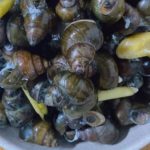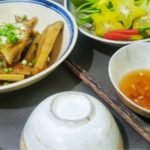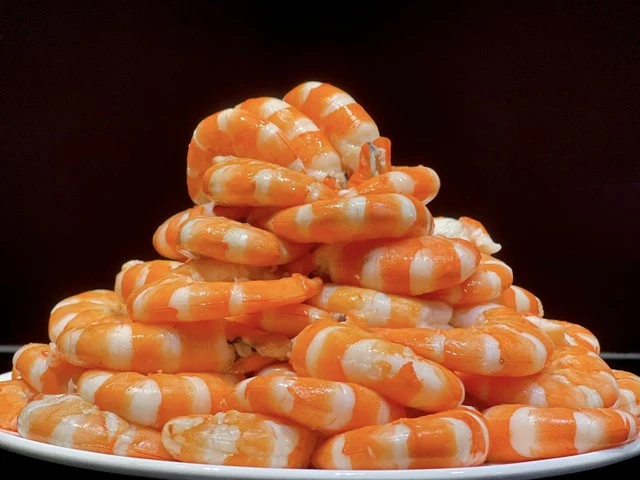The Secret to Perfect Vietnamese Canh Cua (Crab Soup)
In Vietnamese cuisine, Canh Cua (Crab Soup) is a beloved dish that has been immortalized in both literature and everyday life. It’s a culinary delight, especially on a hot summer day, when it’s paired with pickled sour eggplant. The key to a perfect Canh Cua is clear broth, abundant crab meat floating on top, and vibrant greens that retain their shape.
To achieve a soup with substantial crab meat chunks, follow these steps (including two crucial tips for forming large crab clusters and ensuring clear broth):
Selecting the Right Crabs for Firm Crab Clusters
The floating crab clusters in Canh Cua are formed by the coagulation of crab protein. Therefore, using fresh, mature crabs is essential. Immature crabs yield lumpy, fragmented crab meat. When selecting crabs, choose ones that are lively, have firm bodies, and are well-proportioned. The ideal size is approximately the length of a thumb. Avoid small crabs, as they are likely to be immature. Inspect the crab’s apron (yếm): it should be free of eggs, and the flesh should be full and not indented. A dented apron or excessive foam indicates a weak or malnourished crab. For optimal flavor, choose crabs during the full or new moon phases. Crabs tend to molt during the middle of the lunar month, resulting in less meat and flavor.
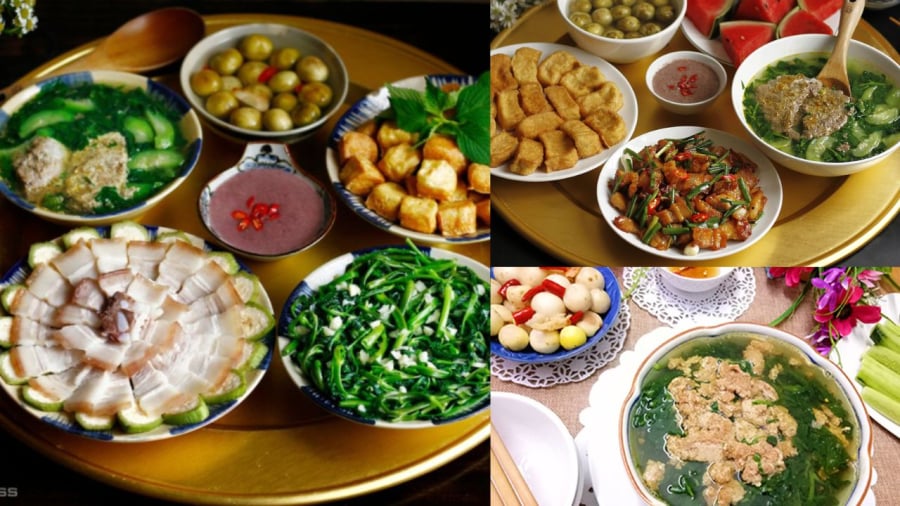
A tantalizing bowl of Canh Cua, featuring succulent crab clusters
Enhancing Crab Clusters by Adding This Ingredient
Traditional wisdom suggests incorporating sea salt when preparing the crab meat to promote the formation of bigger clusters. After cleaning the crabs, removing the apron, and cracking open the shell, rinse them thoroughly to remove any remaining black water and odor. Then, when grinding or pounding the crab meat, add a pinch of salt. If having the crabs processed at a market, request the addition of a few grains of salt during the grinding process. Some vendors may neglect this step. Adding salt during this stage enhances protein coagulation, leading to larger, firmer crab clusters.
Manually pounding the crab meat using a traditional mortar and pestle yields the best flavor and aroma, as it avoids metallic odors from electric grinders. However, this method is time-consuming and may not extract all the crab meat effectively. Remove the crab roe and reserve it in a separate bowl, discarding any remaining black liquid.
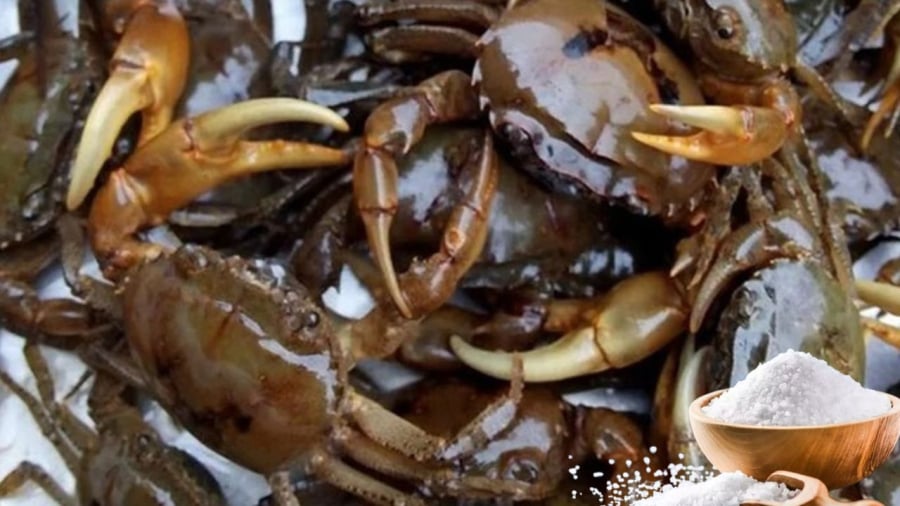
Adding sea salt during crab preparation enhances cluster formation
Cooking Canh Cua: Mastering the Heat and Adding a Secret Ingredient
To cook the soup, place the crab mixture in a pot over medium heat. Avoid excessive heat or too low a temperature. Stir the soup broth constantly in one direction using chopsticks to prevent the crab meat from breaking into smaller pieces.
As the soup boils, the crab clusters will gradually rise to the surface. Avoid vigorous boiling, as this can break up the clusters. For thicker, more voluminous clusters, consider the following technique:
Using Eggs: After stirring the crab mixture, allow it to form clusters naturally. In commercial kitchens, chefs often whisk in an egg to help the crab meat bind together, resulting in more substantial clusters and clearer broth. Some establishments add mashed tofu for additional texture, but this can leave small white specks in the soup and diminish its flavor. Eggs impart a softer texture and richer taste to the crab clusters.
Eggs promote the coagulation of crab meat, creating more clusters and ensuring a clear broth free of suspended crab pieces. Once the clusters have formed, remove them from the pot using a spoon. Some people prefer to leave the crab meat in the pot and push it to one side before adding the greens. However, this technique may result in overcooked, tougher crab meat.
Bring the crab broth back to a boil and carefully add the greens. If the crab clusters are still in the pot, take care not to break them up with the greens. Spinach, Malabar spinach, and luffa are commonly used greens that cook quickly, so avoid prolonged boiling. Skim off any foam that rises to the surface. Adjust the seasonings to taste.
Seasoning the Crab Roe
There are two main methods for seasoning the crab roe:
Light and Clean Broth: Some prefer their Canh Cua with a light and clean broth, so they incorporate the crab roe directly into the boiling broth to mingle with the crab clusters.
Flavorful Crab Roe Paste: For those who enjoy a more intense flavor, heat oil in a pan, sauté chopped shallots until fragrant, and then add the crab roe. Stir-fry the mixture, adding seasonings to taste. Pour the sautéed crab roe over the crab clusters in the soup. When serving, ladle the soup into a bowl and garnish with a slice of crab meat on top.
Assessing Quality
A perfectly prepared Canh Cua features clear broth, vibrant greens evenly distributed throughout the bowl, and crab meat clusters floating on the surface.
Complimenting Canh Cua
On a hot summer day, Canh Cua is commonly paired with pickled sour eggplant, a delectable combination enjoyed in many northern Vietnamese provinces and family meals.
Cooking Tips
For optimal flavor and texture, avoid overcooking the crab meat and broth. Overcooked crab meat becomes dry and fibrous, reducing its savoriness.
When selecting crabs for Canh Cua, look for lively ones with firm bodies and well-proportioned sizes. The ideal crab size is approximately the length of a thumb. Avoid small crabs as they are likely to be immature, resulting in lumpy and fragmented meat. Inspect the crab’s apron (yếm) to ensure it is free of eggs and has a full, non-indented flesh. Opt for crabs during the full or new moon phases for optimal flavor.
Adding a pinch of sea salt during the crab meat preparation stage enhances protein coagulation, resulting in larger and firmer crab clusters. Traditional wisdom suggests rinsing the crabs thoroughly after cleaning and removing the apron, and then adding salt while grinding or pounding the meat. Manual pounding using a mortar and pestle is preferred for the best flavor and aroma.
The secret ingredient used by chefs in commercial kitchens is an egg. Whisking an egg into the crab mixture helps bind the crab meat together, resulting in more substantial clusters and a clearer broth. This technique ensures softer and richer-tasting crab clusters.
Cook the soup over medium heat, stirring the broth constantly in one direction with chopsticks to prevent the crab meat from breaking. As the soup boils, the clusters will rise to the surface. Avoid vigorous boiling, and use a spoon to gently remove the clusters once formed. Bring the broth back to a boil and carefully add your choice of quick-cooking greens such as spinach, Malabar spinach, or luffa.
There are two main approaches. For a light and clean broth, incorporate the crab roe directly into the boiling broth to mingle with the crab clusters. Alternatively, for a more intense flavor, sauté the crab roe with chopped shallots and seasonings before pouring it over the crab clusters in the soup.
A perfectly prepared Canh Cua will have a clear broth, vibrant greens evenly distributed throughout the bowl, and crab meat clusters floating on the surface.
On a hot summer day, Canh Cua is commonly paired with pickled sour eggplant, a popular combination in many northern Vietnamese provinces and family meals.
Avoid overcooking the crab meat and broth, as it can become dry and fibrous, reducing its savoriness. Manage the heat carefully during the cooking process, and stir gently to prevent breaking up the crab clusters.
Easy and Delicious Winter Recipes for a Cozy Night In
As the weather begins to cool down, why not get in the kitchen and prepare some hearty and delicious winter dishes? From beef in red wine sauce to braised fish and tomato sauce with tofu, these warm meals are sure to fill you with comfort and bring back fond memories. Making these treats is easy and worth it – so don’t wait to try them!
“Tempt Your Taste Buds with These 7 Mouthwatering Snakehead Fish Dishes”
Are you ready to get creative in the kitchen? Asian Seabass, or Cá he, provides a unique flavor and delightful texture that cannot be matched. As this type of fish is part of the grouper family, it has a fatty and fragrant taste to it. All you need to do now is look to the 7 mouthwatering recipes we have for you to try! So, fire up the stove – it’s time to start cooking!

























